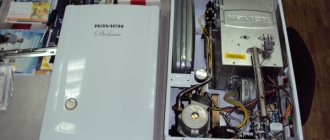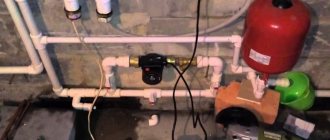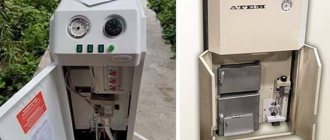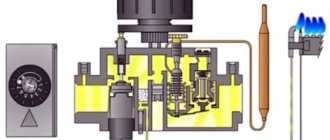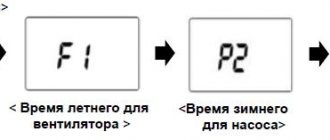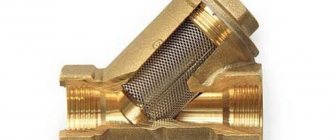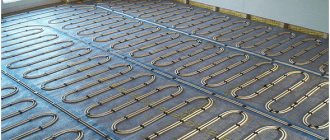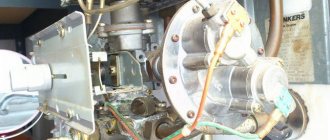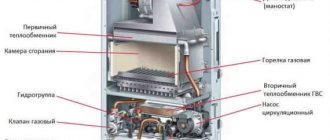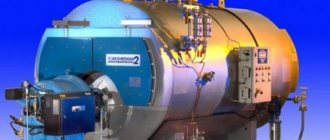Agree, you do not always monitor the boiler and try to check it as rarely as possible. At the same time, you may like to repair household appliances yourself, and not necessarily for the sake of saving money. If you have been using boilers for a long time, then you know about the peculiarities of their heat exchangers, as parts that often cause breakdowns. If you want to repair the gas boiler heat exchanger yourself, read our instructions and make sure that it is not at all difficult.
From our article you will learn how to remove the primary and secondary heat exchangers from the boiler. In addition, you will learn how to care for and repair these parts. If you are not familiar with the structure of the boiler, then, among other things, you will understand the structure of the exchangers, learn about their location, and the principle of operation.
A lot of water passes through the heat exchangers of boilers; over time, they become clogged and sometimes become deformed. In this article we have provided important information about their cleaning, repair and replacement. We'll cover enough about heat exchangers so that you can repair these boiler parts on your own.
Navien boiler how to increase pressure
To adjust the gas pressure of Navien boilers (Ace, Deluxe, Prime, Atmo), you will need a differential digital pressure gauge with a mm H2O scale
A table with gas pressure values for various Navien boiler models is given at the end
1.With the boiler turned off, attach a pressure gauge to the gas pressure control fitting on the burner
2. Turn on the boiler
3. Set DIP switch 3 on the control board to the “ON” position, which will correspond to the minimum load.
4. Set the minimum gas pressure according to the table using the screw for setting the minimum pressure (Increase - counterclockwise, decrease - clockwise)
5. Set DIP switch 3 on the control board to the “OFF” position (Main state)
6.Set DIP switch 2 on the control board to the “ON” position, which corresponds to the maximum load
7. Set the maximum gas pressure in accordance with the table using the adjusting screw (Increase - counterclockwise, decrease - clockwise)
9. Disconnect the differential pressure gauge hose from the gas valve fitting
10. Set the DIP switch to the “OFF” position (Main state)
11. Turn on the boiler
12. Check the tightness of the gas valve (Fitting). If abnormal noises appear, you need to check the boiler for gas leaks.
Manufacturers, reviews
Based on reviews, you can get a picture of quality and hidden problems.
Thermona
Czech manufacturer, can work with antifreeze. Floor and wall models. Works with different types of gas. You can select a unit with the required power. Available with one or two circuits. Heat exchangers are made of different materials, they can be primary, secondary, biothermal. Equipped with automation. The service life promised by the manufacturer is 15 years, with a cast iron heat exchanger - 25 years.
Review of the THERM 35 EZ/B model: the user says that at first it was good, but after a while the burner began to work poorly and had to be sent in for service repair.
Hydrosta
The South Korean company Gofra-E produces a wall-mounted double-circuit boiler. Power - 11.6 - 46 kW. The automation is assembled on a microprocessor. There is a digital display, sound alarm, and a portable control panel. The room thermostat expands the capabilities of the device.
Buyers complain about the high price, but are satisfied with the quality. The boiler is repairable, with parts available for repair.
Master Gas
Since 2010, the Armavir Gas Equipment Plant has been producing boilers with a capacity of 24–30 kW. The heat exchanger is double-circuit, secondary, plate. The difference is that the combustion chamber is covered with dark glass. Korean Master Gas Seoul is double-circuit, with a power of 14–21 kW. For DHW - 20.9 kW. Gas consumption - 620/1990 l/h (minimum, maximum). The coolant is water. Temperature control range 40–80⁰С, for hot water supply 37–60⁰С. There are no complaints from users.
Arderia
In 2008, the first wall-mounted boilers appeared, jointly produced by Russia and a South Korean company. In 2015, production became domestic. The plant is located in the village of Enem, near Krasnodar. Reviews are contradictory; at the beginning of production there were complaints about noise and high gas consumption. Another user complained about a malfunction of the three-way valve; it turned out that it needed to be disassembled and lubricated. Happened after three years of use.
Fondital Victoria Compact
Italian company. The biothermal copper heat exchanger makes it possible to use the boiler for heating and domestic hot water. Electronics protect the gas appliance from freezing. Good feedback from users.
Saunier Duval
Made in France. Primary circuits are made of copper and steel plate circuits for hot water supply. Equipped with pressure sensors. The portable remote control allows you to program gas heating for a week. The reviews are positive; for some, the boiler has worked for more than 10 years. The service received criticism - expensive repairs of components.
Demrad
Large Turkish company. The boiler has two circuits, circuits with separate, joint (biothermal) heating. The heating circuit is a primary steel heat exchanger; for hot water supply, a copper plate heat exchanger is used. Combustion chamber - open, closed. Some users note the unreliability of the design and expensive repairs.
AEG
Famous German company. The gas burner flame adjusts to the water flow and prevents sudden temperature changes. There is a security system. Adjusts to changing gas pressure in the range of 13–20 mBar. The downside is the high price of the product and repairs.
"Beleto"
The famous Tula plant also produces gas equipment. The boiler has one or two circuits. The double-circuit heat exchanger uses a copper heat exchanger. The combustion chamber is closed, open. Power - 12.5 - 20 kW. A special feature is energy independence, the boiler can operate with natural circulation. Reviews are mixed.
Navien boiler how to increase pressure
If you want your heating boiler to operate in optimal mode, in which both fuel consumption and combustion efficiency are at the maximum level, then you have to find out at what level the pressure in the expansion tank of your unit should be. It is this design element that is its most important component, regardless of the type of fuel on which the heating equipment operates.
It is impossible to imagine a normally functioning water heating unit without an expansion tank. At the same time, the pressure in it is the reason for the normal operating process, in which thermal energy is effectively transferred from the burning fuel to the coolant.
Often, service center specialists are faced with questions like “Why is the pressure dropping in my Navien boiler?” There could be a lot of reasons for this. However, to correctly identify them, it is important to understand the basic operating principles of the equipment.
Work principles
To heat a large country house, owners often install gas double-circuit boilers. They have a number of advantages compared to other types of equipment. Devices that operate on blue fuel are economical and affordable, since gas pipelines are laid even in the most remote corners of the country. Even if the central gas system does not run near your home, you can buy a cylinder and effectively heat the room in winter.
Why double-circuit boilers? They perform two jobs at once - they maintain the desired temperature in the room and supply the house with hot water, so there is no need to install a boiler or a water heater to ensure hot water flows from the tap.
Why does the pressure drop in a gas boiler?
Today's market offers different models of heating equipment from well-known domestic and foreign manufacturers. The devices differ from each other.
This article is devoted to the 10 main competitive advantages of NAVIEN boilers.
Most double-circuit boilers that are in the same price range as NAVIEN have one bithermic heat exchanger!
The design with 2 separate heat exchangers has a number of advantages:
more productive and of high quality for hot water supply, more resistant to clogging of the heating system coolant by scale and dirt, less expensive in case of repairs
NAVIEN offers a unique range of boiler power:
13/ 16/ 20/ 24/ 30/ 35/ 40 kW
The use of boilers with a power of 13/16/20 kW in accordance with the heat loss of the room leads to significant gas savings! boilers with a power of 30/35/40 kW are significantly more affordable than their analogues!
NAVIEN boilers with heating power of 16, 20 and 24 kW when operating in DHW mode provide the same amount of hot water!
The NAVIEN boiler will always give you enough hot water!
)))))Are you serious?
If you exclude the impossible (already proven), what remains will be the truth, no matter how incredible it turns out to be!
on topic: it doesn’t matter whether the topstarter left or not. it may help others.
A very plausible possibility is that it is leaking from the safety valve. those. when you fill/start everything, there are no leaks, and then everything goes somewhere. If the discharge from the safety valve is connected to the sewer, then the discharge of water is not visible at all. check - place a basin under the drain.
reason: the system heats up, the pressure rises above the critical pressure, the valve trips. treatment: 1. read the instructions for the permissible pressure and when filling the system do not exceed it
adjustment of the expansion tank, the internal pressure should not be higher than the pressure at which the replacement valve is designed to operate.
Hi all! I think you will agree that it is not a very fun experience to be left without heating and hot water on winter days. And this prospect came up several times in my house. I want to tell you how I struggled with this and what knowledge I acquired in this matter.
In my house, for about six years, a gas double-circuit wall-mounted boiler ARISTON CLAS 24 FF has been working to create comfort. Undoubtedly, the thing is extremely convenient; anyone who used, for example, geysers from the early nineties will understand.
But, as they say, nothing lasts forever, and therefore sooner or later, you have to deal with the refusal of technology to perform the intended work. Although I practiced on my Ariston, so to speak, some faults will be common to any boiler. So to the point:
The pressure in the boiler drops or increases, what are the reasons?
One of the common malfunctions is that the pressure in the heating system slowly drops and when it drops below normal, the boiler.
Is it possible to set the Navien Ace 13K gas boiler to maintain the room temperature and at the same time limit the water temperature in the system to no higher than 70C?
Unfortunately, there is no such double adjustment. The boiler “understands” the command based on the room temperature and adjusts its operating mode itself. Usually the boiler starts operating at maximum until the temperature approaches the desired temperature. At the same time, it turns itself off, turns on, and reduces combustion if necessary. But you won’t be able to manually set the water temperature in this mode.
Away mode is set. Recently, when I turn on the hot water, the heating turns on. How to make the adjustment?
1. When you turn on hot water in the “away from home” mode, does the faucet icon appear on the remote control? And at the same time there is hot water and heating is working? 2. If so, how do you determine that the heating is working? Radiators get hot or only get hot directly.
In this material you will find out what the pressure should be in the expansion tank of a heating boiler in order for the efficiency and energy savings of the heating boiler to be maintained at the highest level.
Regardless of the energy carrier on which the heating system operates, one of the most important elements for its successful operation is the expansion tank. The need for its arrangement is dictated by physical laws, and the pressure in the expansion tank of the boiler ensures a normal working process.
Operating principle of pressure maintenance
Any coolant liquid used in heating systems tends to expand when heated and increase in volume. To prevent excess liquid from threatening depressurization and equipment failure, modern boilers are equipped with a reservoir called an expansion tank or expansion tank. During heating.
The popularity of autonomous heating is growing not only among residents of private houses, but also among apartment owners. This trend is associated with the positive qualities of modern boilers, the ease of their installation and operation.
Among the mass of the offered assortment, the Navien atmospheric gas boiler is in high demand; we will tell you further about the principles of operation, causes of malfunctions and methods for eliminating them.
Brief information about the company Navien
The South Korean association Kyung Dong Navien has long been present in the heating and water heating equipment market. The main products of the company are gas boilers.
Did you know? Initially, Navien equipment ran exclusively on natural gas, but over time, models began to be developed that were adapted to run on liquefied gas.
The corporation firmly maintains its leadership in the market due to the fact that each Navien gas boiler is adapted to operate at...
Choosing a gas boiler.
Nowadays, it is very difficult to choose from the variety of heating equipment existing on the market the one and only heating boiler that would satisfy all your needs and wishes. When choosing heating equipment, everyone is guided by their own individual criteria, known only to themselves. Of great importance in this case is the budget that needs to be met, personal experience in operating heating equipment, advice from friends and acquaintances, information about this or that equipment gleaned from the media or from technical literature, and of course the opinion of all family members. With all this, we would like, at minimal cost, to get into use a modern, reliable, functional unit, distinguished by a modern design that combines style, reliability and durability.
Wall-mounted gas boiler Navien Ace.
NAVIEN company is the largest South Korean manufacturer and...
Tell me, what are the main error codes that Navien boilers produce?
Brief description of errors and malfunctions:
01E - boiler overheating. 02E - low RH level. 03E - no signal about the presence of a flame or an open circuit of the flame sensor. 04E - false signal about the presence of a flame or a short circuit in the flame sensor circuit. 05E - open circuit of the exhaust temperature sensor. 06E - short circuit of the exciter temperature sensor circuit. 07E - hot water supply temperature sensor circuit open. 08E - Short circuit of the hot water temperature sensor circuit. 09E - fan malfunction. 10E - malfunction of the smoke removal system. 12E - flame goes out during boiler operation. 13E - short circuit of the OM flow sensor. 15E - malfunction or control board malfunction. 16E - boiler overheating. 17E - DIP switch setting error. 18E - smoke exhaust sensor overheating. 27E - open circuit or short circuit.
How I set up the Navien boiler, hysteresis on the burner
The boiler heats up, life goes on, but something told me that everything is not so rosy, first of all, a mistake was found among many buyers of gas boilers, they all buy with a reserve of power “just in case,” well, I, like everyone else, I took it with a reserve, with a reserve for hot water supply and frosts, i.e. It turned out that in warm weather outside, the Navien boiler continues to cycle, which is very unfortunate for it, and can lead to breakdown, first of all, there may be a breakdown of the ignition system, since it constantly lights the boiler, and most often wears out, this is not for me I want to.
As an inquisitive researcher, with a stopwatch in my hands, I studied the cycles of the boiler in different modes of its operation, in warm weather, in cold weather, and decided to test the capabilities of the boiler at work depending on the temperature in the room, for this I selected the room mode in the boiler settings.
At first everything was happy, the boiler obediently stood up, waiting for the set point to fall.
Boiler repair Navien
How can you configure the following parameters on the Navien Atmo 24 boiler: reduce power, pump run-on?
In terms of power - switch the DIP to a lower power.
The Navien ace 30k boiler panel shows error number 3, how to fix the problem?
Error 3 most often indicates gas problems. Either check the gas pressure with the device turned on and off (you need a gas pressure gauge), or call a service technician. If everything is fine with the gas, then you need to open the gas valve and clean it of dirt. There should be no other problems in your situation.
I would like to reduce the power to 16 kW. But they say that it will not work below 20 due to the nature of the burner. What should I do?
For Atmo, it was experimentally determined that there is no point in cutting below 20 kW. The boiler has malfunctions, especially in low-temperature CO and air temperature control. This.
Key features of Navien System disadvantages Flame sensor failure
The instructions for using the Navien gas boiler colorfully describe the sequence of execution of commands to control this device, which is capable of operating under such conditions when equipment from competitors simply stops.
This is supported by both the fully electronic control system and the key principles used to regulate the operation of the boiler. Navien, a product from a Korean manufacturer, is reliable, stable, and able to cope with frankly emergency operating conditions.
Key Product Features
The boiler is distinguished by its low price. Nevertheless, the instructions for the Navien gas boiler are very detailed, the installation of any modes is thoroughly described. Thus, one can understand how seriously the manufacturer approached communicating the main aspects of control to the average buyer. Users will have no problems with.
Recommendations for installation of wall-mounted gas boilers Navien
Features of installing gas boilers Navien Ice and Deluxe
— Since the weight of the device is 28-30 kg, the wall on which the device is mounted must be additionally strengthened (if there is a danger that the wall may not withstand such a load).
— When installing the unit, it is necessary to use an anchor bolt, which helps ensure reliable fastening of the boiler.
— To avoid vibration, the boiler must be securely fixed to the wall (in order to prevent noise during operation of the device, you can use buffer panels, for example, rubber ones).
Install the Navien Ace/Deluxe double-circuit gas boiler strictly horizontally, and also maintain a distance of more than 60 cm on all sides for ease of repair and inspection.
Principles of correct installation.
NAVIEN is the largest Korean manufacturer of universal heating equipment, specializing mainly in the production of gas boilers, as well as other energy-related mechanisms intended mainly for home use.
All components for our equipment are manufactured in Korea and Japan. The entire boiler assembly process takes place exclusively at our own factories in Korea with the strictest quality control in accordance with ISO 9001 standards.
Currently, the company is the largest seller and manufacturer of thermal equipment and carries out 80% of its sales in Korea, Japan, Russia, the Pacific region and the USA.
Until 2006, the main goal of the company was to dominate the markets of the Pacific region, but since 2007 we have actively begun promoting our products to the European markets.
On page: 25305075100
Sorting: DefaultName (A -> Z)Name (Z -> A)Price (by.
Malfunctions and repair work
The operation of a unit with two heat exchangers depends on the metal: steel or cast iron, and can last from 8 to 15 years, respectively, if the user performs all routine maintenance established by the boiler equipment manufacturer.
The most common failures of a heat exchanger are scale and ruptures of heating surfaces due to burnout of the heat exchanger wall or high pressure/temperature parameters of the coolant.
If the owner of the unit can cope with the first problem himself and repair the heat exchanger of a gas boiler with his own hands, then a rupture of the device practically cannot be repaired, but must be completely replaced with a similar design. Specialists can solder the heat exchanger for gas boilers, but, as a rule, after such repairs it is not durable.
Replacing a defective heat exchanger
Replacing a Western-assembled heat exchanger that is under warranty is carried out by a service center, while domestic models can be replaced independently.
To do this, first select the desired modification; if it is not available in the retail chain, contact the manufacturer. In order to replace a faulty boiler element, you will need to remove the defective device.
Algorithm for dismantling the boiler heat exchanger for replacement or descaling:
- Disconnect the boiler unit from the gas mains and the electrical network.
- Remove the front panel.
- I close the fittings on the coolant supply and return pipes.
- Open the drain valve and drain water from the network and boiler.
- Remove the fastening on the gas pipe and disconnect the gas pipe.
- Remove the cover of the automation system from the primary devices.
- Dismantle the sensors from the combustion chamber, remove the fastenings on the lid and remove it.
- Turn off and dismantle the fan in order to remove the heat exchanger.
- Remove the clamps on the pipes connected to the primary heat exchanger.
- Remove the furnace of the boiler unit and move it indoors.
- Remove the top cover of the compartment.
- The primary apparatus is removed.
- Install a new heat exchanger on the gas boiler and reassemble the boiler in the reverse order.
The NAVIEN Ace boiler does not hold pressure.
This happened - the water pressure in the heating system did not hold. 2-circuit boiler NAVIEN Ace. After an hour of operation, the pressure drops to “zero”. I add water to the boiler, the pressure rises to the desired level and gradually drops. batteries are not leaking - checked. The pump in the boiler seems to be working normally, nothing is leaking inside either. What could it be. Who can answer? Thank you in advance!
MaxMatvich wrote: until necessary
-how much is this? What is the heated floor made of?
MaxMatvich wrote: 2-circuit boiler. batteries are not leaking - checked. Nothing leaks inside either.
There are two options (provided that there is definitely no leakage anywhere in the heating circuit)
- Perhaps the expansion tank is not working properly. it slowly but surely fills, taking water from the system and reducing the pressure (check its pressure, but given that it is built into the boiler, in theory it should be normally adjusted). You can check this by simply adding water to the system. Someday it should be filled to capacity.
- a breakthrough inside the heat exchanger is possible. and the heating water goes into the hot water supply.
nothing else comes to mind. it cannot evaporate so quickly.
MaxMatvich wrote: nothing is leaking. What could it be.
MaxMatvich wrote: Who can answer?
Yes Easy. -you just need to think about what to guess))))) Is the boiler newly installed or working? - for understanding. - apply pressure (2) and look for leaks without starting the boiler.
orca wrote: a breakthrough inside the heat exchanger is possible. and the heating water goes into the hot water supply.
)))))Are you serious?
Yes, he's already gone.
iv.iv wrote: )))))are you serious?
If you exclude the impossible (already proven), what remains will be the truth, no matter how incredible it turns out to be!
on topic: it doesn’t matter whether the topstarter left or not. it may help others.
A very plausible possibility is that it is leaking from the safety valve. those. when you fill/start everything, there are no leaks, and then everything goes somewhere. If the discharge from the safety valve is connected to the sewer, then the discharge of water is not visible at all. check - place a basin under the drain.
reason: the system heats up, the pressure rises above the critical pressure, the valve trips. treatment: 1. read the instructions for the permissible pressure and when filling the system do not exceed it
- adjustment of the expansion tank, the internal pressure should not be higher than the pressure at which the valve is designed to operate
- valve replacement
orca wrote: If you exclude the impossible (already proven), what remains will be the truth, no matter how incredible it turns out to be!
I meant that the pressure in the heating can never be higher than in the water supply. And the fuse cannot bleed to zero. It's easier to call a serviceman than to guess.
I had exactly the same problem a year ago. The boiler is the same model 24, the symptoms are absolutely the same. I’ll also add that my gas flue extends from the boiler about 1 meter upward and immediately dives through the wall into the street. That's where it ends. Therefore, the appearance of a larger amount of steam directly under the window of the 2nd floor (under which the gas flue ends) was noticed almost immediately. As it turned out, the heat exchanger was leaking. It only flowed in such a way that the water did not come out when the boiler was not working and the pressure did not drop accordingly, but during operation it left along with the steam through the flue. Replacing the heat exchanger solved the problem. Cost with work is about 5,000 rubles. But a year later the exact same problem appeared. Same symptoms. Now I think. What to do? There is no desire to change the heat exchanger every year. A new boiler is a bit expensive.
Materials
Substances transfer heat in different ways. It is necessary to take into account pressure, maximum heating temperature, and corrosion resistance. Heat exchanger materials:
- steel;
- cast iron;
- copper;
- aluminum.
What are the differences?
Steel
The heat exchanger made of steel is the most durable. Tolerates pressure and temperature changes well. Can be repaired and is cheaper than other materials. Disadvantage: severe corrosion. Stainless steel heat exchangers last a long time.
Cast iron
Cast iron models tolerate exposure to water well and are difficult to corrode. They take longer to heat up than steel ones, but stay hot longer. The fragility of the material does not allow impacts.
Carefully. Cast iron does not tolerate sudden changes in temperature. If it is necessary to replenish the system with water, the boiler must be cooled before filling.
To remove scale, the heat exchanger is washed at intervals:
- once a year if running water is used;
- once every 2 years, when using antifreeze;
- once every 4 years, when the coolant is purified water.
Cast iron is the heaviest material.
Copper
Copper transfers heat well, can be soldered, and is lightweight. Almost resistant to corrosion.
Advice. If you install it yourself, you may make a mistake. If there is an electrical circuit in the wall behind the boiler, fistulas will appear in the heat exchanger.
Disadvantages: cost, they burn out quickly.
Aluminum
Lightweight heat exchanger with good thermal characteristics. Does not tolerate scale and requires annual maintenance. Disadvantages: heavy soldering and welding.
Which tap needs to be turned on the boiler to increase the pressure in the system (cm)?
Gas double-circuit boiler Ariston.
Before starting, you need the pressure sensor to show 1.0 - 1.15 bar.
Mine shows 0.5 bar.
How to increase the pressure in the system?
Looking at the diagram of a heating gas boiler, it is not difficult to guess which valve is responsible for the pressure in the heating system. Of course, the fact that your pressure gauge shows 0.5 bar is a very low pressure for normal operation of the boiler. The fact that the instructions say 1.0-1.15 bar is the minimum. Considering that I seem to have the same boiler, I want to show you a close-up of the control panel, namely the pressure gauge scale.
Please note that the red stripe is right up to number 3. And don’t look at the fact that my blood pressure is low. I haven't turned on the heating yet. What I want to say. The minimum pressure should be 1.15 bar and the maximum 3.0 bar. Therefore, I am always for the golden mean. Try to keep the pressure around two. As soon as it drops below two, open the tap number 16 in the diagram (feed tap). In my boiler, this tap is made of blue plastic (if you look under the boiler, you can see it). Especially for you, I put my phone “under the skirt” of the boiler and took a picture of what the feed tap looks like.
Types of contours
To stabilize surges in the pressure gauge needle, special compensating tanks are installed in the circuit.
The pressure in the heating expansion tank forces the working fluid back into the pipe. They come in two types. Design differences allow them to be used in systems of different types: with access of coolant to air;
In open circuits, the circulation of the working fluid occurs due to gravity. What pressure is in the expansion tank of an open-type heating system is not of key importance; its volume is more important. These systems are designed in such a way that there is an expansion tank at the highest point. This is a vessel of certain dimensions made of metal or plastic. It is not sealed and the coolant in it comes into contact with air. An open-type tank may not have a lid, but it’s still better when it has one. Thanks to it, garbage or insects, if any, will not get into it;
without access of the working fluid to air;
The pressure in the expansion tank of a closed type heating tank is higher than that of a conventional one. In closed circuits, water is pumped by an electric pump, which is the root cause of pressure. Without a pump, circulation is impossible. Schemes of such systems require the installation of a sealed expansion tank. It can be installed at any point on the contour, with the exception of segments:
- after the electric pump;
- after the heater.
Its location in space also matters. Air bubbles are pushed upward by the coolant. They can't get into the tank. Since this will affect what pressure will be in the expansion tank of a sealed heating system.
People often start talking online about what the pressure should be in the expansion tank of the heating system. To find out the latter, the average person will have to sift through a decent amount of information, since the answers of the participants often contradict. Let's try to sort everything out and start with the design.
Error codes
It is sometimes impossible to repair Baksi boilers yourself without knowing the fault codes. The devices have a built-in monitoring system that diagnoses failures and displays them on the device display in alphanumeric form.
Baksi control panel
Conventionally, such failures are divided into two groups:
- Leading to a complete stop of the equipment.
- Leading to a transition to standby mode.
If the boiler or one of the functions stops working, try to restart it manually. If no serious damage has occurred, the lock will be removed. It's an electronics failure. If the failure is caused by overheating of the equipment, there is no draft or the cessation of gas flow, then it will not be removed until the factor that caused it disappears.
Codes E01 and E10 appear more often.
The first one is the most common. This is a sign that the flame monitoring sensor is turned on. The following reasons can cause it:
- Stopping the gas supply.
- Incorrect phase distribution (if the model is phase-dependent).
- Failure of the flame sensor itself (it is dirty).
- Failure in the ignition system.
- Gas valve failure.
- There is insufficient air supply.
- Low gas pressure.
First of all, check whether the gas supply valve is turned on, and then the sensor connection. Next you need to press R and hold for three seconds. The error should disappear from the display. An electronics failure has occurred. If this code appears again, you need to contact the service.
The second code appears when there is a malfunction of the sensors that control water circulation and pump operation. Reasons for triggering:
- Low coolant pressure.
- There is no contact between the board and the pressure switch.
- Pressure switch faulty.
- Malfunction of the pump operation sensor.
- Malfunction of the pump itself.
- The heat exchanger is clogged.
Error codes
In these cases, it is better to immediately contact the service center. The exception is pump failure. They change it with their own hands. You can clean the filters yourself. The rest is the prerogative of specialists.
If codes E96, E97, E98 occur, immediately call the service center. These errors are associated with failures of the electronic board, which is not recommended to be repaired by yourself.
In the video you can see the boiler repair:
Location of expansion tanks
There are several options for expansion tanks depending on their location in the system.
- Built-in closed - all modern boiler models are already equipped with expansion tanks. Their volume directly depends on the size and performance of the boiler. The greater the expected load on the tank, the larger the displacement of its expander.
- External open - usually used under conditions of natural gravitational circulation of fluid in the system. It is an open container installed at the top point. The liquid displaced from the pipes rises up along with the air, and goes back into the system under the influence of natural atmospheric pressure and gravitational force.
Organization of basic access
All boiler inspection and repair operations require lowering the lower control panel. It is also necessary to remove the outer casing.
Removing the front panel
- Loosen the front panel mounting screws “A” located at the bottom of the front panel. (Fig. 1.1);
- The control panel slides down and extends forward, pivoting on two side hinges; the panel remains in a horizontal position on the floor, which allows access to the internal components of the device (Fig. 1.2);
- to increase the service space, you can lift and rotate the panel to a completely horizontal position (Fig. 1.3);
- Unscrew the screws “B” from the bottom of the front panel (Fig. 1.4);
- Lift the front panel up and forward, after unscrewing the screws on top. (Fig. 1.5)
Removing the front combustion chamber cover
- Unscrew the screws “C” (Fig. 1.6);
- Remove the front cover from the guide pins
(Fig. 1.7).
Removing the side panels
- Unscrew the 4 screws “D” for each of the side panels (Fig.1.8);
- Pull the bottom of the panel away from the chassis, then lift it slightly and disconnect it from the boiler (Fig. 1.9).

